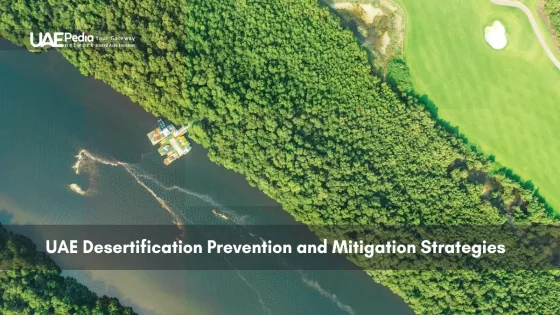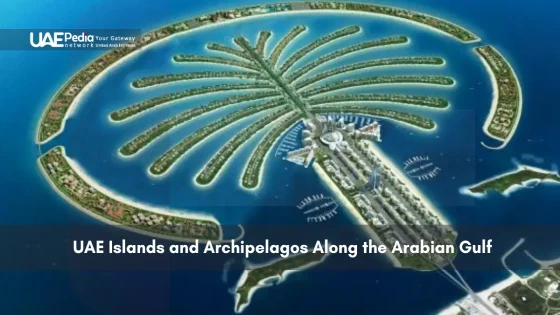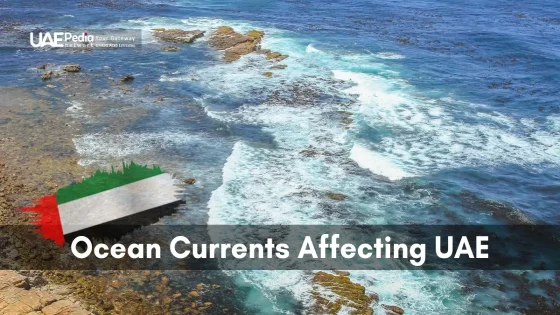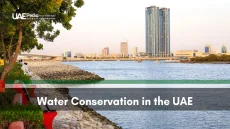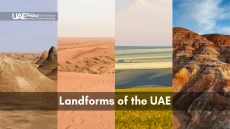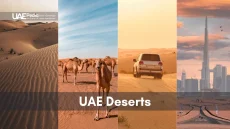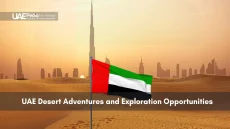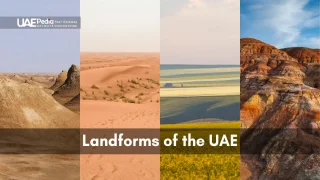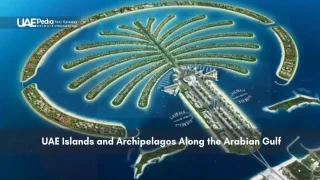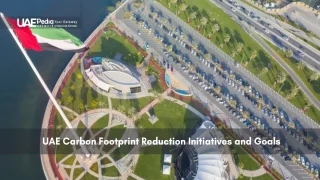Can a nation thrive in the desert without losing its sands to progress? The Emirates face this paradox daily—balancing rapid urban growth with the fragile ecosystems of arid landscapes. Decades ago, Dubai’s skyline was just a whisper of dunes and fishing villages. Today, its ambition stretches as far as the eye can see, but so do the challenges of preserving life in one of Earth’s harshest environments.
This isn’t just about planting trees. It’s about reinventing how communities coexist with shifting sands. The government has launched bold projects—like cloud seeding to boost rainfall and liquid natural clay treatments that transform barren soil into fertile ground. Startups here don’t just chase profits; they engineer solutions to keep deserts alive.
You’ll discover how ancient wisdom meets cutting-edge tech in this fight. From Bedouin water conservation techniques to AI-powered irrigation systems, every strategy shares a goal: ensuring the desert remains a source of life, not loss. Let’s explore what’s working—and why it matters for the planet.
Key takeaways:
- Innovative blends of tradition and technology combat land degradation
- Government-led pilot projects prioritize long-term ecological balance
- Sustainable land use supports both economic growth and environmental health
Understanding the UAE Desertification Challenge
Imagine soil turning to dust beneath your feet—how does a region fight back when its very ground is slipping away? Here, the delicate dance between nature and human activity shapes landscapes. Over 40% of once-fertile areas have vanished since 2000, according to a government report, leaving farmers scrambling to adapt.
When Earth Loses Its Grip
Picture this: relentless sun bakes cracked earth where crops once thrived. This isn’t just drought—it’s the systematic breakdown of land health. Overgrazing strips protective plant cover, while improper irrigation leaves salt crusts shimmering like toxic snow. “Our grandfathers’ fields now blow away as sand,” shares Ali, a third-generation date farmer near Al Ain.
Climate’s Double-Edged Sword
Rainfall here averages less than 4 inches yearly—Phoenix, Arizona gets double that. Yet when rare storms come, they often arrive as destructive floods. Rising temperatures accelerate evaporation, creating a cruel cycle: drier soil, weaker vegetation, more erosion. Urban sprawl compounds the issue, with concrete swallowing 300+ football fields of natural terrain annually.
“We’re not just losing dirt—we’re losing our roots.”
These shifts ripple beyond farms. Dust storms from degraded lands now darken city skies 20+ days each year, challenging everything from air quality to solar energy production. The race to balance growth with ground preservation defines this era—and the solutions emerging could rewrite survival manuals for arid regions worldwide.
Government Initiatives and Policy Efforts in the United Arab Emirates
What if skyscrapers and solar farms could dance together under the Arabian sun? That’s the vision driving policy here—where economic ambition meets environmental stewardship. Take Dubai’s Green Growth Strategy: it’s not just about swapping oil rigs for wind turbines. It’s reshaping how entire industries operate, from construction to agriculture, while cutting carbon footprints like intricate paper snowflakes.
Green Growth Strategies and Economic Diversification
We’ve seen bold moves like Food Tech Valley rise from the dunes—a $1.5 billion hub where startups grow lab-made seafood and vertical farms thrive without soil. “This isn’t farming,” laughs a young Emirati engineer. “It’s sci-fi with hummus.” The project aims to slash food imports 40% by 2035, turning arid challenges into export opportunities.
Investment in Renewable Energy and Sustainable Practices
Check the Mohammed Bin Rashid Solar Park—it’s swallowing sunlight to power 1.4 million homes. By 2030, this desert disco of mirrors and panels will offset 6.5 million tons of CO2 yearly. Pair that with smart resource allocation systems tracking water use down to the droplet, and you’ve got a blueprint others copy.
| Project | Focus | Impact (2025 Target) |
|---|---|---|
| Solar Park Expansion | Renewable Energy | 5,000 MW Capacity |
| Food Tech Valley | Agri-Innovation | 30% Less Food Waste |
| Green Startup Fund | Eco-Entrepreneurship | 200+ Companies Launched |
These efforts ripple beyond borders. Regional neighbors now study Emirati models for wind farms and carbon trading markets. Because here, leadership means proving sand can spark revolutions—not just in tech, but in how we value every grain of progress.
Innovative Solutions to Combat UAE desertification
What if the desert’s greatest weakness could become its secret weapon? Engineers here are flipping the script—using the region’s abundant sunshine and open spaces to test breakthroughs that could reshape arid landscapes globally. Two technologies stand out: weather modification that coaxes rain from reluctant clouds, and soil treatments turning barren ground into farmland.
Rainmakers of the 21st Century
Picture planes firing salt flares into cotton-ball clouds. That’s cloud seeding—UAE style. By releasing silver iodide particles, scientists trigger rainfall where parched lands need it most. Last year alone, these missions boosted precipitation by 15% in targeted areas. “We’re not creating storms,” clarifies Dr. Alya Al Mazroui, head of the rain enhancement program. “We’re helping nature work smarter.”
Clay That Breathes Life Into Sand
Now meet Liquid Natural Clay (LNC)—a milky mixture that binds sand particles. When sprayed, it creates a sponge-like layer locking in water and nutrients. Trials near Al Ain saw date palms thrive with 50% less irrigation. Better yet? The treatment lasts up to five years, making it ideal for large-scale projects.
| Technology | Water Savings | Crop Yield Increase |
|---|---|---|
| Cloud Seeding | 18% More Rainfall | N/A |
| Liquid Natural Clay | 47% Reduction | 82% Higher |
Solar farms power these innovations—because why waste fossil fuels saving the planet? The Mohammed Bin Rashid Solar Park now dedicates 12% of its output to water management systems. It’s a full-circle approach: renewable energy fueling solutions that protect natural resources while driving economic growth.
Challenges remain. Cloud seeding’s long-term ecological impacts are still studied, and LNC costs must drop for widespread use. But as one farmer told us while harvesting tomatoes in former dunes: “My grandfather called this magic. I call it good science.”
Afforestation and Tree Planting Initiatives
Can concrete jungles and green oases coexist in harmony? The region’s One Million Trees initiative aims to prove they can—with careful planning and lessons learned from early missteps. Launched in 2022, this effort seeks to plant 1 million native trees by 2030 across cities and deserts. But as volunteers discovered during the first planting season, good intentions need smart execution.
The One Million Trees Project and Native Species
Early challenges taught planners hard truths. Fast-growing foreign palms initially replaced local species—until 40% died within two years. “We prioritized speed over sustainability,” admits a project coordinator. Now, teams focus on hardy natives like Ghaf trees, which thrive with minimal water and anchor shifting sands.
Landscape Engineering and Sustainable Urban Greening
Innovative designs now maximize survival rates. Bioswales channel rainwater to tree roots, while hydrogel crystals mixed into soil retain moisture for weeks. In Dubai’s Business Bay, vertical gardens cool buildings using 60% less water than traditional irrigation.
“Every tree here is a small victory—and a lesson for hotter climates worldwide.”
| Strategy | Water Savings | Survival Rate Increase |
|---|---|---|
| Native Species Focus | 55% | 78% |
| Hydrogel Soil Mix | 43% | 91% |
| Community Monitoring | N/A | 67% |
Neighboring countries watch closely. Saudi Arabia’s 10 Billion Trees project now mirrors the Emirates’ focus on local species after early losses. These shared lessons create living laboratories—proof that arid landscapes can support lush life when people work with nature’s rules.
Water Management and Sustainable Agricultural Practices
Every drop tells a story here—where liquid gold sustains life in sun-baked earth. With annual rainfall below 4 inches, farmers and engineers collaborate on solutions that stretch each molecule further. Cloud seeding programs now boost precipitation by 15% in key areas, but innovation doesn’t stop at the skies.
Drip Irrigation, Rainwater Harvesting, and Resource Allocation
Picture date palms sipping water through tiny tubes instead of drowning in flooded fields. Drip irrigation cuts usage by 60% while boosting yields—a win-win for crops and groundwater reserves. In Fujairah, rooftop catchment systems store rare rains, providing three months’ supply for small farms.
Smart sensors take guesswork out of hydration. Soil moisture monitors ping farmers’ phones when plants thirst, preventing overwatering that leads to salt buildup. “We used to irrigate daily,” says Leila, a tomato grower. “Now our app tells us exactly when and where to water.”
Energy-efficient desalination plants complement these efforts, though challenges linger. Solar-powered systems now produce 40% of agricultural water needs, slashing fossil fuel dependence. Pair this with recycled wastewater for irrigation, and you’ve got a blueprint that nourishes crops without exhausting resources.
“Water isn’t just a resource—it’s our legacy.”
This approach reshapes arid farming globally. From Arizona to Australia, regions adopt these methods to combat degradation while securing food futures. The lesson? When every drop counts, creativity becomes your most valuable tool.
Biodiversity Restoration and Climate-Responsive Economic Growth
Imagine turning sand into a carbon sponge—where every grain traps emissions instead of spreading them. Here, cracked earth transforms into thriving ecosystems through clever techniques that marry ancient wisdom with quantum leaps in technology. One innovation steals the show: liquid natural clay. This milky elixir doesn’t just revive soil—it locks away carbon like nature’s vault.
Ecological Benefits and Carbon Sequestration Strategies
Picture this: native acacia trees now anchor renewed ecosystems, their roots weaving through clay-treated soil. Each hectare captures 8 tons of CO₂ annually—equivalent to taking 1,700 cars off the road. “We’re not just planting trees,” says Dr. Amal Khalid, a soil scientist. “We’re engineering living carbon banks.”
Smart management systems track progress in real time. Drones map vegetation health, while blockchain tokens reward communities for maintaining green zones. This data-driven approach makes restoration a part of daily life—and a profitable one. Farmers earn carbon credits worth $120 per ton stored, creating economic incentives as tangible as the dates they harvest.
“Healthy landscapes aren’t luxuries—they’re infrastructure for climate resilience.”
The ripple effects? Cleaner air, stabilized dunes, and climate-responsive economic growth fueled by green tech exports. Solar-powered desalination plants now irrigate these renewed habitats, proving sustainability and profit can grow side by side. It’s a blueprint where every restored acre spins gold from sand—without losing an ounce of wonder.
Looking Ahead: A Sustainable Path for the UAE
What if tomorrow’s cities could hum with life while keeping deserts vibrant? The Emirates’ Green Agenda 2030 charts this balance—where tech-driven agriculture meets solar-powered progress. Picture vertical farms growing 1,000+ tons of greens yearly alongside AI-monitored forests. It’s not science fiction—it’s the National Food Security Strategy 2051 in action.
Farmers here now blend hydroponics with ancient water wisdom, cutting waste by half while doubling yields. Startups test liquid clay treatments that lock moisture into sandy soil, and solar plants power 87 water-smart farms. These aren’t isolated wins—they’re threads in a tapestry of resilience.
The secret? Collaboration. Communities track soil health via apps, while policies reward carbon-storing crops. This fusion of grit and innovation could slash global food insecurity—proving arid regions can thrive without draining resources.
You’re part of this story. Share ideas on social media using #GreenGrowthAE, or visit a vertical farm to see tomorrow’s harvest today. Because when deserts bloom, they don’t just feed nations—they inspire revolutions.
The Emirates aren’t just surviving the future—they’re designing it. One smart farm, one community effort, one sunbeam at a time.
Harsh climates, limited rainfall, and high evaporation rates strain natural resources. Human activities like overgrazing and unsustainable water use amplify these challenges—creating a delicate balance between development and ecological preservation.
The National Center of Meteorology uses advanced cloud seeding to enhance rainfall. By injecting salts into clouds, this technique boosts water availability for agriculture and ecosystems—a clever blend of science and nature to tackle water scarcity.
Absolutely! Initiatives like the One Million Trees Project focus on native species like ghaf and samar. These resilient plants stabilize soil, provide shade, and restore habitats—turning sandy expanses into thriving green corridors over time.
This innovative material mixes water with recycled clay to create a nutrient-rich layer. Spread over sandy areas, it helps retain moisture and supports plant growth—like a botanical superglue binding fragile ecosystems together.
From drip irrigation in Al Ain’s date farms to AI-powered leak detection in Abu Dhabi, smart water management is key. Rainwater harvesting systems and treated wastewater reuse show how tech meets tradition in resource conservation.
Solar farms like Mohammed bin Rashid Al Maktoum Park reduce reliance on fossil fuels while powering desalination plants. Clean energy drives sustainable growth—turning sunlight into both electricity and environmental solutions.
